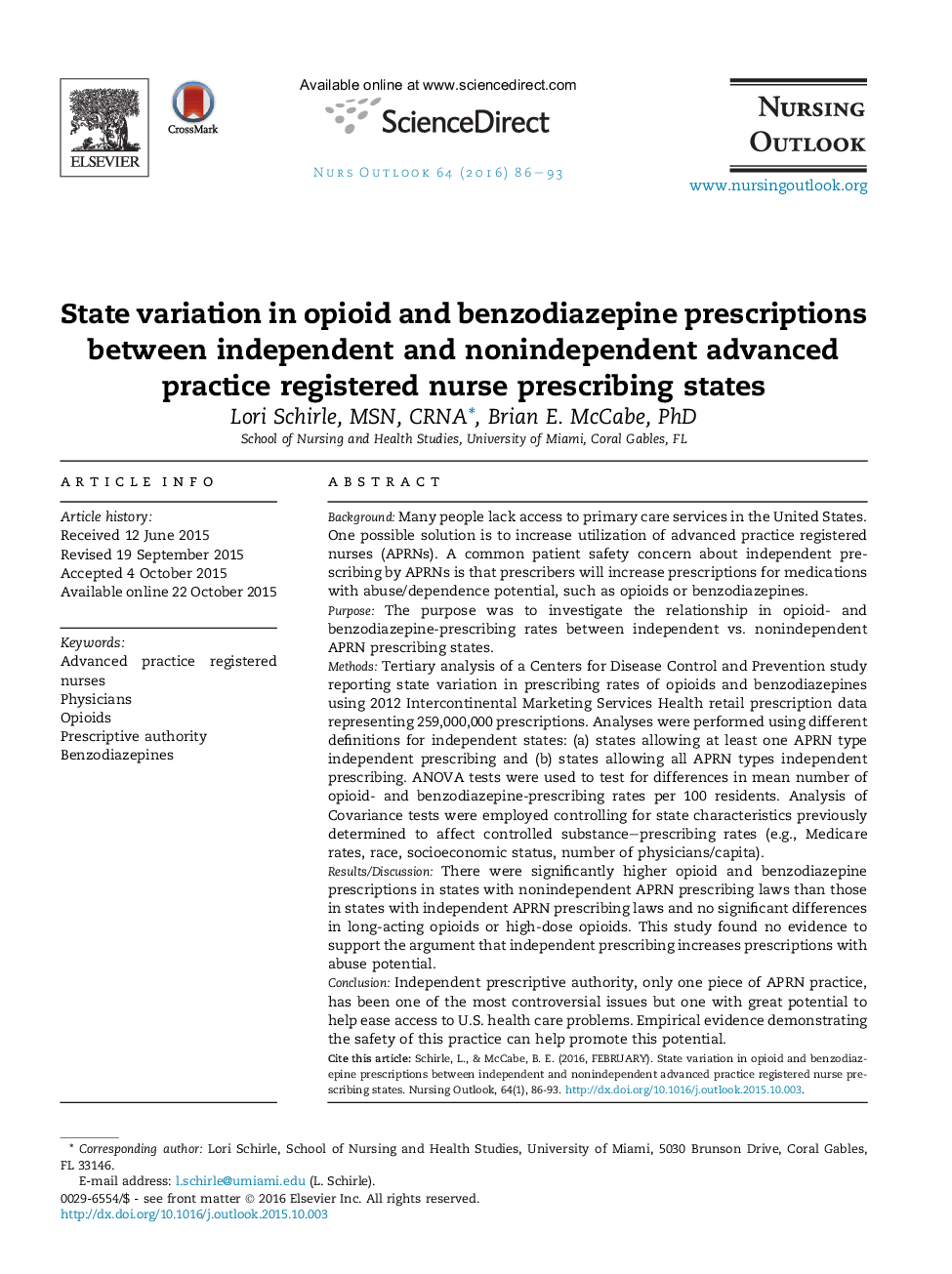| Article ID | Journal | Published Year | Pages | File Type |
|---|---|---|---|---|
| 2676822 | Nursing Outlook | 2016 | 8 Pages |
BackgroundMany people lack access to primary care services in the United States. One possible solution is to increase utilization of advanced practice registered nurses (APRNs). A common patient safety concern about independent prescribing by APRNs is that prescribers will increase prescriptions for medications with abuse/dependence potential, such as opioids or benzodiazepines.PurposeThe purpose was to investigate the relationship in opioid- and benzodiazepine-prescribing rates between independent vs. nonindependent APRN prescribing states.MethodsTertiary analysis of a Centers for Disease Control and Prevention study reporting state variation in prescribing rates of opioids and benzodiazepines using 2012 Intercontinental Marketing Services Health retail prescription data representing 259,000,000 prescriptions. Analyses were performed using different definitions for independent states: (a) states allowing at least one APRN type independent prescribing and (b) states allowing all APRN types independent prescribing. ANOVA tests were used to test for differences in mean number of opioid- and benzodiazepine-prescribing rates per 100 residents. Analysis of Covariance tests were employed controlling for state characteristics previously determined to affect controlled substance–prescribing rates (e.g., Medicare rates, race, socioeconomic status, number of physicians/capita).Results/DiscussionThere were significantly higher opioid and benzodiazepine prescriptions in states with nonindependent APRN prescribing laws than those in states with independent APRN prescribing laws and no significant differences in long-acting opioids or high-dose opioids. This study found no evidence to support the argument that independent prescribing increases prescriptions with abuse potential.ConclusionIndependent prescriptive authority, only one piece of APRN practice, has been one of the most controversial issues but one with great potential to help ease access to U.S. health care problems. Empirical evidence demonstrating the safety of this practice can help promote this potential.
